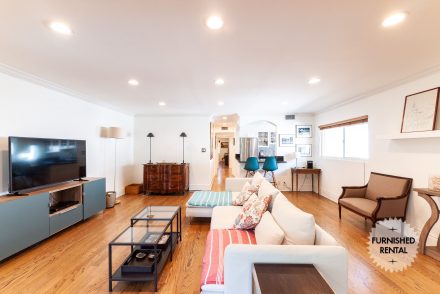Mold. It’s dirty… It’s stinky… It’s toxic… It’s everywhere.
Sometimes it’s obvious. Sometimes you smell it. And sometimes you just have an intuition that it’s there. So what do you do?
This week we sat down with Mold Inspector, Bret Pfeifer from Golden State Mold Inspections and got the low-down on mold and what renters can do about it.
The Rental Girl: Hey Bret! Thanks for chatting with us today. Mold has become an increasingly bigger and bigger issue for renters in Los Angeles. We get a lot of renters asking us what they can do if they suspect mold. Can you explain briefly exactly what you do?
Bret: As a mold inspector, our job is to inspect a property for mold contamination and identify the type of mold and its toxins. We determine the source of the mold growth and prepare a scope of work for proper remediation. On top of this, in our inspection we report areas that could be susceptible to future mold contamination and give recommendations on how to fix and prevent mold from growing.
The Rental Girl: When a renter is previewing a property, what signs would they see that indicate the presence of mold?
Bret: If there are no signs of visible mold, indications would include a musty odor, water stains on the ceilings and walls, cracked tiles and deteriorated grout in the kitchens and bathrooms, any water stains or damage below sinks and/or soft spots near or around any sinks, tubs, toilets or drains.
The Rental Girl: What are common causes of mold growth?
Bret: The two main causes of mold growth are poor ventilation and moisture.
The Rental Girl: How can a renter prevent mold from growing?
Bret: The first defense against mold growth is to alert the landlord to any water leaks. Other prevention steps include using the bathroom fan when showering and don’t leave wet rags or towels beneath the sink or in laundry room closets. Try to allow the unit to “breathe” by opening windows regularly.
The Rental Girl: Let’s say a renter suspects mold in their apartment. They call you to come inspect. What can they expect? What happens during the inspection, how long does it take, etc.?
Bret: It depends on the situation. Inspections can last from 30 minutes for a partial inspection (inspection of a specific area) to three hours for an inspection of the entire property.
During the inspection I will be using a moisture meter as well as sight and smell to find signs of moisture intrusion. If any moisture intrusion is found I will then inspect deeper to determine if there is any microbial growth. If there is microbial growth, I will take a sample and send it to a lab to determine the type of mold and its level of toxicity.
The Rental Girl: Do you have anything to add?
Bret: Yes, it is important for everybody to know that mold is everywhere, it’s in the air we breathe. There are thousands of different types of mold and out of the thousands there are approximately 100 that produce toxins. This is why it’s important to determine the type of mold. While you do not want any type of mold to be growing where you live or work, drastic action needs to be taken when toxic molds are present.
The Rental Girl: Thanks Bret! Keep up the good work.
Renters, if you suspect mold and your landlord is not willing to do anything about it, you may choose to pay for the inspection yourself. You’ll want to make the initial request to your landlord in writing, just like you should do with all maintenance concerns and requests. Contact Bret for the inspection and once you have proof of the presence of mold, you can then go to your landlord to request remediation.
Bret Pfeifer
Golden State Mold Inspections
310 525-0619
fax 310 846-1456
goldenstatemoldinspections@gmail.com
















